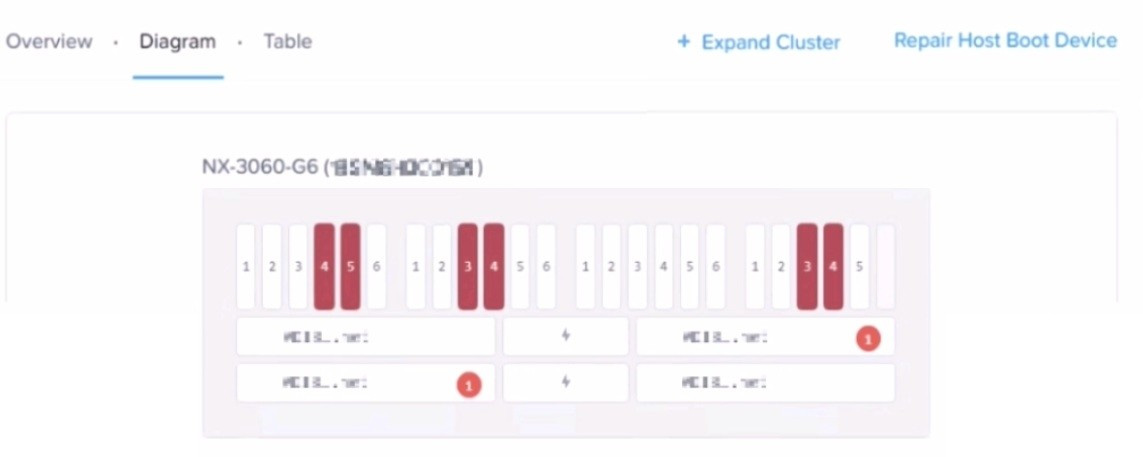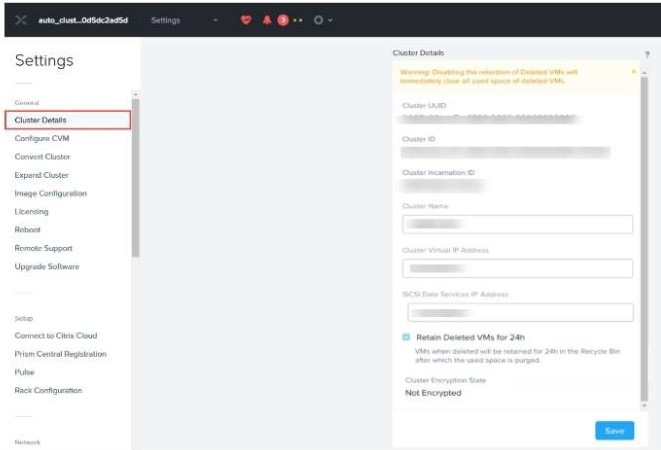Exam Details
Exam Code
:NCA-6.5Exam Name
:Nutanix Certified Associate (NCA) v6.5Certification
:Nutanix CertificationsVendor
:NutanixTotal Questions
:133 Q&AsLast Updated
:Mar 22, 2025
Nutanix Nutanix Certifications NCA-6.5 Questions & Answers
-
Question 81:
An administrator wants to have a single chart with the logical usage for three storage containers. Which action should the administrator perform?
A. Create a new Metric Chart
B. See Storage usage under Prism Element Health page
C. Create a new Entity Chart
D. See Usage Summary in the Storage Containers detailed view
-
Question 82:
What happens to images that are imported into Prism Central?
A. Copied to the Prism Central image repository
B. Remain in the source duster after import
C. Copied to all clusters managed by Prism Central
D. Deleted from the source cluster after import
-
Question 83:
Which feature or configuration is best for securing network traffic between the management and storage replication environments?
A. Use of Firewall Rules
B. Network Segmentation
C. VM Anti-Affinity Rules
D. Different Storage Containers
-
Question 84:
Refer to the exhibit.

After an abrupt power outage, an administrator receives a number of alerts indicating disks are failed. Prism Element shows a large number of disks offline as seen in the diagram. This single block, four node cluster is configured FT1 with an RF2 container holding all user data.
What number of drive failures on different domains (node, block, or rack) could this configuration have tolerated prior to seeing data unavailability?
A. 1
B. 4
C. 3
D. 2
-
Question 85:
How is the destination cluster determined when uploading images from the local workstation to Prism Central?
A. Selected randomly
B. Selected manually
C. Selected alphabetically
D. Selected sequentially
-
Question 86:
How would an administrator upgrade the LCM framework to the latest version?
A. Run LCM pre-checks
B. Settings/Upgrade Software
C. Run LCM inventory
D. Run an NCC health check
-
Question 87:
Which AHV feature proactively monitors a Nutanix cluster for compute and storage I/O contention or hot-spots over a period of time?
A. Genesis
B. ADS
C. Prism
D. Cluster Maintenance Utility
-
Question 88:
An administrator should use which Nutanix component to to create in-guest clustering?
A. Storage Pools
B. Volumes
C. Blocks
D. Containers
-
Question 89:
An administrator needs to do a manual VM in-place restore of a mission-critical VM. Which Prism Central option should the administrator use to satisfy this task?
A. Snapshot
B. Clone
C. Backup
D. Recovery Point
-
Question 90:
How should an administrator enable the recycle bin on a nutanix cluster?
A. Select the Enable Recycle Bin checkbox on the storage Overview page
B. select Retain Deleted VMs for 8h in the cluster Details Page of the cluster setting
C. Select the enable recycle bin checkbox in the configure CVM page of the cluster setting
D. Select Retain Deleted VMs for 24h in the cluster details page of the cluster setting
Related Exams:
NCA-5.15
Nutanix Certified Associate (NCA) v5.15NCA-5.20
Nutanix Certified Associate (NCA) v5.20NCA-6.5
Nutanix Certified Associate (NCA) v6.5NCM-5.15
Nutanix Certified Master - Multicloud Infrastructure (NCM-MCI) v5.15NCM-MCI
Nutanix Certified Master - Multicloud InfrastructureNCM-MCI-5.15
Nutanix Certified Master - Multicloud Infrastructure (NCM-MCI) v5.15NCM-MCI-5.20
Nutanix Certified Master - Multicloud Infrastructure (NCM-MCI) v5.20NCM-MCI-6.5
Nutanix Certified Master - Multicloud Infrastructure (NCM-MCI) v6.5NCP-5.10
Nutanix Certified Professional (NCP) v5.10NCP-5.15
Nutanix Certified Professional - Multi cloud Infrastructure (NCP-MCI) v5.15
Tips on How to Prepare for the Exams
Nowadays, the certification exams become more and more important and required by more and more enterprises when applying for a job. But how to prepare for the exam effectively? How to prepare for the exam in a short time with less efforts? How to get a ideal result and how to find the most reliable resources? Here on Vcedump.com, you will find all the answers. Vcedump.com provide not only Nutanix exam questions, answers and explanations but also complete assistance on your exam preparation and certification application. If you are confused on your NCA-6.5 exam preparations and Nutanix certification application, do not hesitate to visit our Vcedump.com to find your solutions here.
